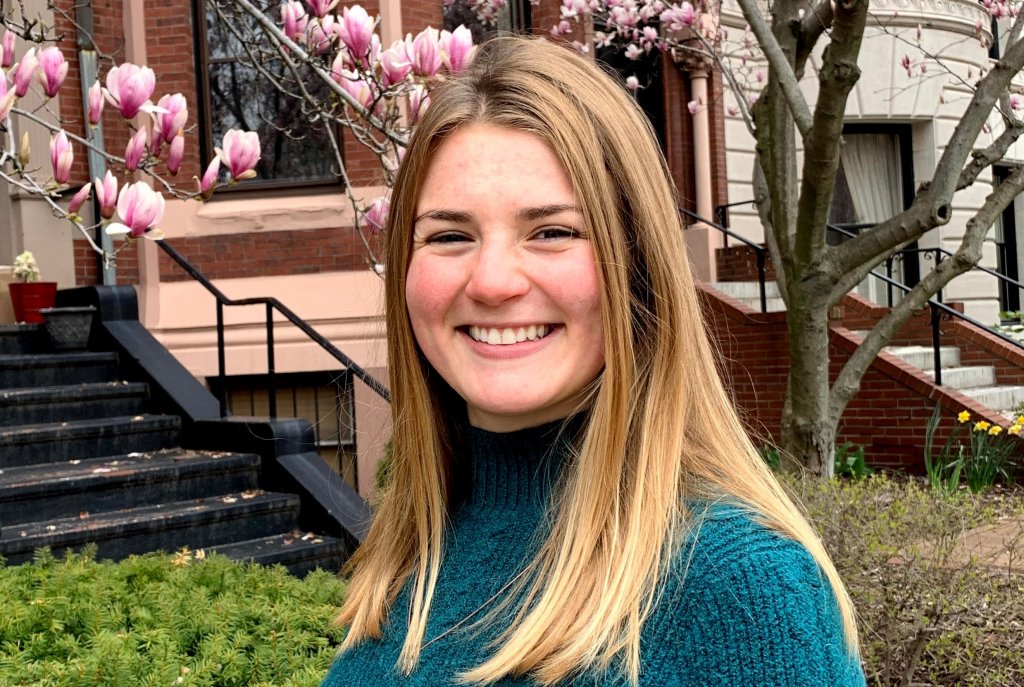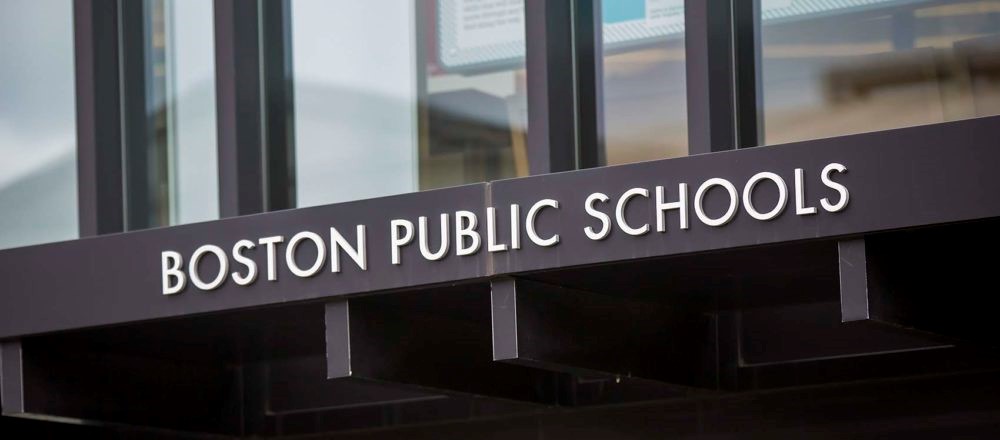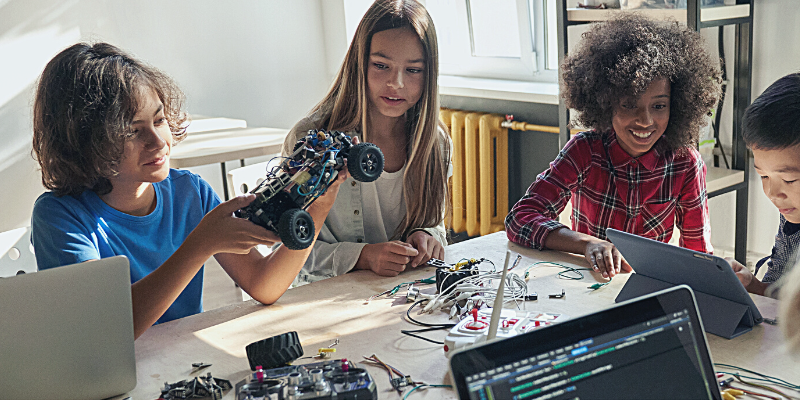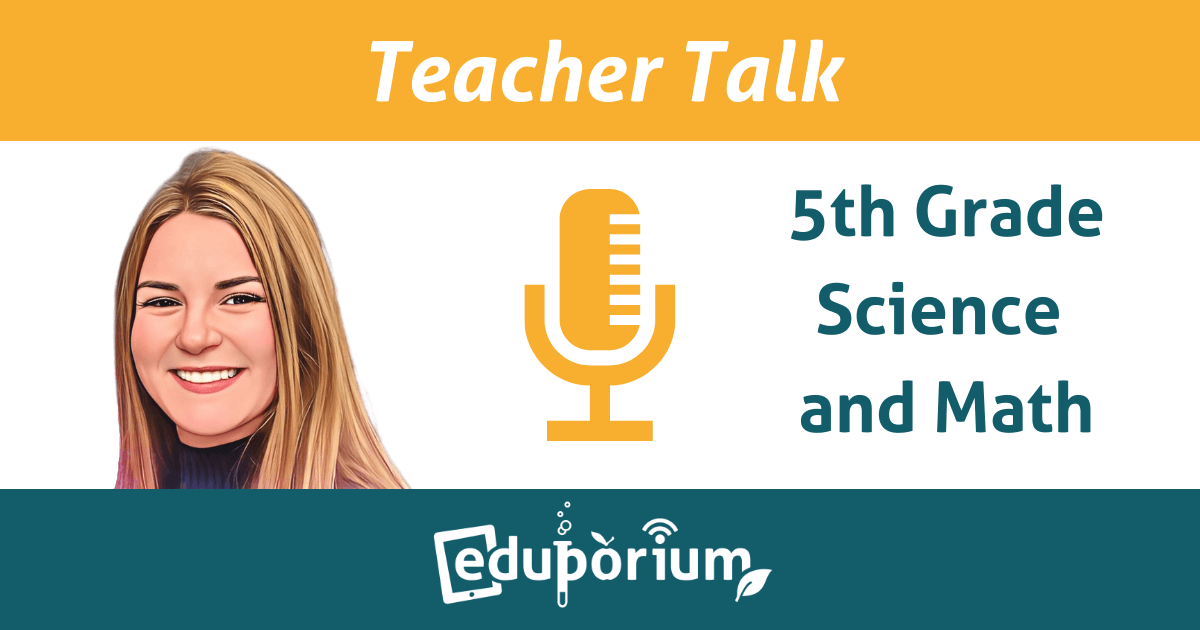At Eduporium, we talk a lot about the tech side of our mission—which classroom robots are best for each grade level or how you can set up a new 3D printer. But what’s the view like from the teacher’s side? How are real-life educators teaching STEAM in their classrooms? To find out, I’m interviewing educators from all over the United States, starting in Eduporium’s home state of Massachusetts.
Today, in our new Teacher Talk series, I’m speaking with Lisa Blais, a fifth grade science and math teacher in the nearby Boston Public School system. She’s been living in the Boston area for the past several years. Although she originally wanted to be a doctor, her path changed to education when she started studying at Gordon College, a private university on the North Shore of Massachusetts.
This evening, we’re chatting over Zoom, her from a condo in Southeast Boston, me from the Eduporium office. Here are some of the highlights of our conversation.

Tell me about your background in STEAM education—what led you to your current position?
I’ve always loved math and science and did well in them in high school. I kept [studying] science in college, but I also studied education, so that I could help people. It's now my fourth year teaching in Boston Public Schools. I was first hired as a sub, then taught special ed, and this year, I finally got my dream job teaching math and science.
Can you say more about why STEAM education is your best path to help people?
You get to be with your [class] for eight hours a day. You have such a big impact on them because you get to know them so well, and you get to know their families. And, you provide them education, which is their tool to change their lives.

What’s important about STEAM education?
I love math as a problem-solving puzzle. However, a lot of kids struggle in math and have fear of it. But in science, kids are doing labs and answering questions. They get to experience a phenomenon and ask their questions about it, which makes things a lot more accessible for everyone. You do not have to have a ton of background knowledge. Even those students who learn differently, have disabilities, or may have various proficiencies in their language levels can observe what’s happening and be excited about it.
In one of my homerooms, there are five students with disabilities and two newcomers who don’t speak English. They can’t communicate about melting, which was our most recent lab, but they can watch as it happens. They know what melting is now. They struggle to communicate all day, but they can do science.
Can you tell me more about the melting lab?
We do labs once or twice a week. With the melting lab, they were supposed to recognize the difference between dissolving and melting. Up until then, we’d been learning about solutions.
The melting lab involved a piece of chocolate, a candle, a piece of butter, and a pebble in a cup. We put that cup in another cup full of warm water, and then just watched it. We were all leaning over and taking notes, and I gave them a toothpick so they could poke each material. The idea was to learn that melting takes heat, and dissolving involves liquid breaking down something. They can come to that conclusion on their own [by watching].

What kind of skills are built through these labs and activities?
It depends on the lab, but some are universal, like observation and noticing. Generally, the kids are in their brains trying to figure out why things happened, so they’re [developing] questioning skills and curiosity.
We do a lot of teamwork. One kid is the materials manager, one kid is the notes writer, one kid has to mix the materials, and one kid is stirring their materials. It’s fun to have them practice working together, which is something we don’t always get to do in school. Normally, when working with partners, they work parallel to each other, but in labs, they’re dependent on each other. Each student has to do something for the labs to work. There’s a huge difference.
It’s cool watching every kid contribute, and it gives everyone a lot of agency. [They think], ‘I am important, even if I’m struggling or can’t speak English.’
What do you find to be the most rewarding and most challenging parts of STEM education?
The most rewarding piece is how accessible it is to everyone. It’s an equalizer. How many times in life is everyone able to do something?
The hardest part for me has been materials management. Teachers have so much going on, and you’re expected to put materials together and make it easy for the kids to use. For the melting lab, I had to bring butter from my house, get chocolate from another teacher, and find some pebbles outside. Things like this are very time-consuming.
Materials are mostly provided, but you do have to problem-solve how you'll make it work in the classroom. Even if you have the materials, you might not have space, or you might not have a hot-water heater, or you might not have a freezer on your floor. You have to plan really far in advance.
How does your school use technology in the classroom?
We have an after-school robotics club, and we do have a teacher who specializes in STEM. My students mostly use Scratch on their Chromebooks. They work with Scratch once a week, and they’ve been doing it forever. They’re really far ahead of [my generation] in that way. Coding is harder for us to pick up, but it’s in their lives all the time.
The Boston Public Schools also have a lending library with all kinds of technology, and my class has a 3D printer. We have the materials, but [knowing] when to include them is a bit of a gap.

Tell me more about that. How do you integrate those STEAM education tools?
There are a lot of levels to using new technology. The hardest part is often figuring out how it aligns to the standards and where it goes in your curriculum. [For example], engineering practices are built directly into the standards. Our unit from three weeks ago was on models, and I taped up a box with a marble inside of it and had the kids recreate it. Creating models is one of the standard practices for science, and drawing something for the 3D printer could easily align to that.
Last question: what are your personal teaching goals for this upcoming school year?
I have a goal around context-rich, meaningful math problems. We’re pushing for equitable literacy, which is great as well. We also need diverse authors and for all kids to see themselves. I've made this apply to math by creating meaningful [word] problems for my kids. It makes things more accessible if every student understands [the problem], and it increases engagement.
Thanks for the great chat, Lisa! We appreciate you taking the time to share your insights with us. As people invested in education, we love that science is so accessible, and we’re hoping that our offerings can help with that. Subjects like coding or piloting don’t have to be intimidating when the medium for learning is an adorable robot (especially when it comes with a curriculum). As education becomes more equitable, we hope all kids will be empowered to succeed in STEAM with the foundation they receive in the classroom.
If you're interested in sharing your story as an educator, please contact Eduporium's Content Associate, Kara Applegate, or apply for our monthly educational technology grant. And, don't forget to follow us on Twitter and Instagram so you don't miss our next featured interview!




2 Comments